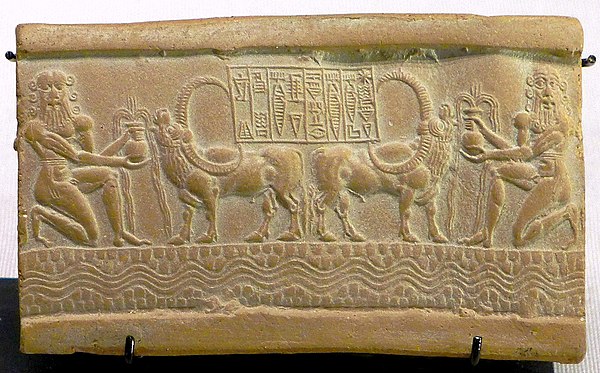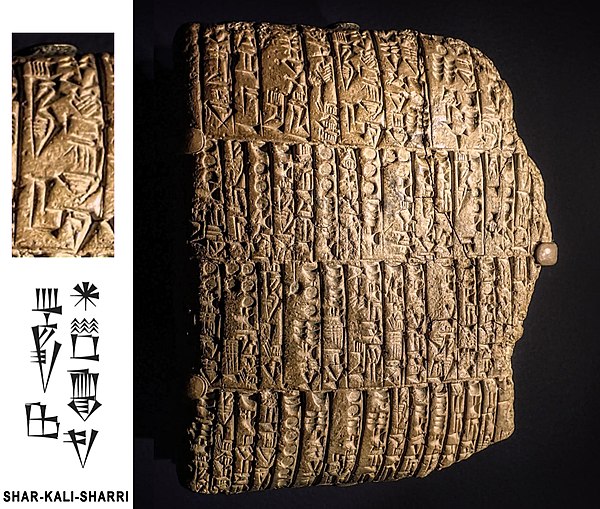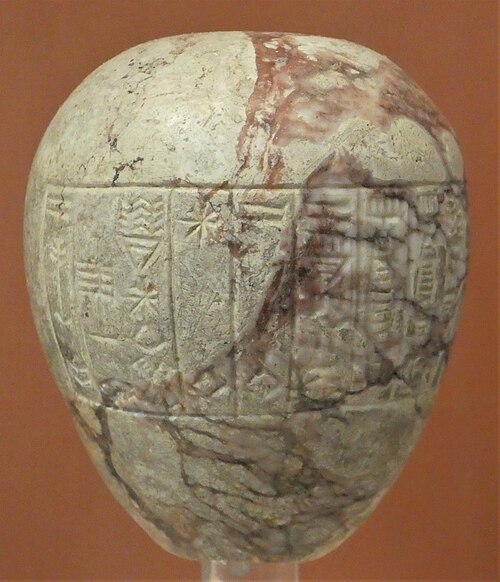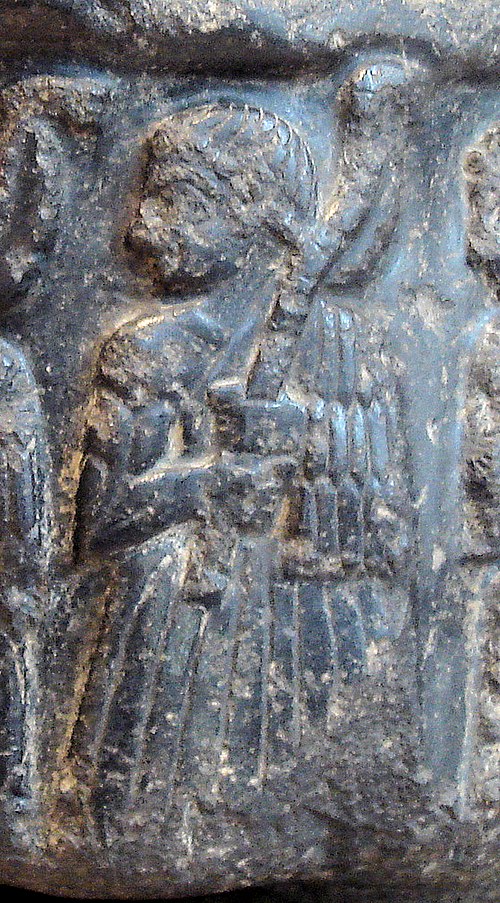Shar-Kali-Sharri
Videos
Page
Shar-Kali-Sharri reigned c. 2217–2193 BC as the ruler of the Akkadian Empire. In the early days of cuneiform scholarship the name was transcribed as "Shar-Gani-sharri". In the 1870s, Assyriologists thought Shar-Kali-Sharri was identical with the Sargon of Akkad, first ruler of the Akkadian Empire, but this identification was recognized as mistaken in the 1910s. His name was sometimes written with the leading Dingir sign demarking deification and sometimes without it. Clearly at some point he was deified and two of his designations marked his divine status, "heroic god of Akkade", and "god of the land of Warium". He was the son and successor of Naram-Sin who deified himself during his lifetime.

Impression of a cylinder seal of the time of Akkadian King Sharkalisharri, with central inscription: 𒀭𒊬𒂵𒉌 𒈗𒌷 𒁕𒈝 𒈗 𒀀𒂵𒉈𒆠 𒅁𒉌𒈗 𒁾𒊬 𒀵𒋢 DShar-kali-sharri da-num lugal a-ga-deki ibe-šarrum dub-sar arad2-su "Divine Sharkalisharri, the mighty king of Agade, Ibni-Sharrum, the Scribe his servant". Circa 2217-2193 BC. Louvre Museum.

Akkadian language cuneiform for Sharkalisharri. The star symbol "𒀭", the "Dingir", is a silent honorific for "Divine".

Cuneiform tablet in the name of Shar-Kali-Sharri

Pink marble ceremonial macehead in the name of Shar-Kali-Sharri (Akkadian: 𒊬𒂵𒉌 𒈗𒌷), found at Sippar. Inscription - "Sar-kali-sarri, king of Agade, for the god Samas at Sippar, dedicated (this mace)." (BM 91146)
Akkadian Empire
Videos
Page
The Akkadian Empire was the first known ancient empire of Mesopotamia, succeeding the long-lived civilization of Sumer. Centered on the city of Akkad and its surrounding region, the empire would unite Akkadian and Sumerian speakers under one rule and exercised significant influence across Mesopotamia, the Levant, and Anatolia, sending military expeditions as far south as Dilmun and Magan in the Arabian Peninsula.

Bronze head of an Akkadian ruler, discovered in Nineveh in 1931, presumably depicting either Sargon or, more probably, Sargon's grandson Naram-Sin.

Sargon on his victory stele, with a royal hair bun, holding a mace and wearing a flounced royal coat on his left shoulder with a large belt (left), followed by an attendant holding a royal umbrella. The name of Sargon in cuneiform ("King Sargon") appears faintly in front of his face. Louvre Museum.

Akkadian official in the retinue of Sargon of Akkad, holding an axe

Prisoners escorted by a soldier, on a victory stele of Sargon of Akkad, circa 2300 BC. The hairstyle of the prisoners (curly hair on top and short hair on the sides) is characteristic of Sumerians, as also seen on the Standard of Ur. Louvre Museum.